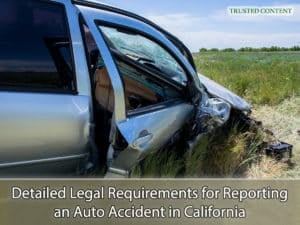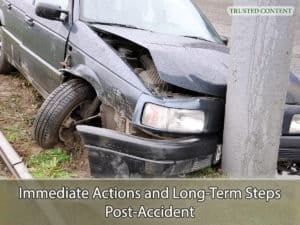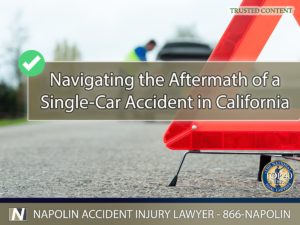Navigating the Aftermath of a Single-Car Accident in California
Single-car accidents, while seemingly straightforward, encompass a range of scenarios from hitting stationary objects to rollovers. In California, these incidents are not just a matter of personal safety but also involve complex legal and insurance considerations. Understanding the nuances of such accidents is crucial, especially in light of California's traffic laws and insurance regulations. These accidents often raise questions about fault, liability, and financial responsibility, making it essential for drivers to be informed about their legal obligations and rights.

Detailed Legal Requirements for Reporting an Auto Accident in California
Detailed Legal Requirements for Reporting an Auto Accident in California
California law mandates the reporting of any car accident that results in property damage exceeding $1,000, injuries, or fatalities. According to the California Vehicle Code Section 16000, drivers must report these incidents to the Department of Motor Vehicles within 10 days using the SR-1 form. This legal requirement is critical for record-keeping and insurance purposes. Failure to report can result in legal penalties, including the suspension of driving privileges. Understanding these requirements is essential for compliance and for protecting one's legal interests in the aftermath of an accident.
Exploring Fault and Liability in Depth
In single-car accidents, determining fault is a nuanced process, especially under California's at-fault insurance system. Factors such as road conditions, vehicle malfunctions, and driver behavior are thoroughly analyzed. For instance, if poor road conditions contributed to the accident, a claim against a governmental entity might be considered. However, in cases of driver error, such as distracted driving or speeding, the driver is typically found at fault. Understanding these distinctions is crucial for drivers to navigate the legal and insurance implications of their accident.
Insurance Coverage and Claims Process
Navigating insurance after a single-car accident in California involves understanding various types of coverage. Personal Injury Protection (PIP) or Medical Payments (MedPay) coverage can be crucial for covering medical expenses, regardless of fault. Collision coverage, while optional, is vital for vehicle repairs or replacement. It's important to promptly file a claim and provide necessary documentation to ensure coverage. Drivers should also be aware of potential premium increases following a claim, a common consequence in the insurance industry.

Immediate Actions and Long-Term Steps Post-Accident
Immediate Actions and Long-Term Steps Post-Accident
After a single-car accident, immediate steps include ensuring personal safety, documenting the scene, and reporting the incident to the authorities and insurance company. Long-term, it's important to monitor any physical symptoms that may arise and seek medical attention. Keeping detailed records of all related expenses and communications is crucial for any potential insurance claims or legal proceedings. Additionally, drivers should consider consulting with a legal professional to navigate the complexities of their specific situation.
Preventive Strategies and Safe Driving Practices
Preventing single-vehicle accidents involves adherence to safe driving practices and awareness of common causes. Regular vehicle maintenance, cautious driving in adverse weather conditions, and avoiding distractions are key strategies. Understanding the risks associated with factors like night driving and high-occupancy vehicles can also reduce the likelihood of accidents. Education on safe driving habits and the potential hazards on the road is an effective approach to minimizing these incidents.
Role of Legal Assistance in Single-Car Accident Cases
Legal assistance in single-car accident cases is invaluable, particularly in navigating California's complex legal landscape. An experienced attorney can provide guidance on dealing with insurance claims, determining fault, and understanding potential compensation for damages and injuries. Legal professionals can also assist in cases where there are disputes over fault or insurance coverage, ensuring that the driver's rights are protected and that they receive fair treatment under the law.

Navigating the Aftermath of a Single-Car Accident in California
Navigating the Aftermath of a Single-Car Accident in California
Dealing with the aftermath of a single-car accident in California requires a comprehensive understanding of legal obligations, insurance processes, and safety measures. For expert guidance and support, contact Napolin Accident Injury Lawyer at (866)-NAPOLIN. Our team offers extensive litigation experience and a commitment to advocating for your rights and aiding in your recovery. Secure a free consultation today to ensure your case is handled with the expertise and attention it deserves.
- Safely and Legally Navigating Parking Lots in California - July 15, 2024
- Navigating the Aftermath of a Highway Auto Accident in California - July 15, 2024
- An Overview of California's Commercial Truck Insurance Laws - July 15, 2024
